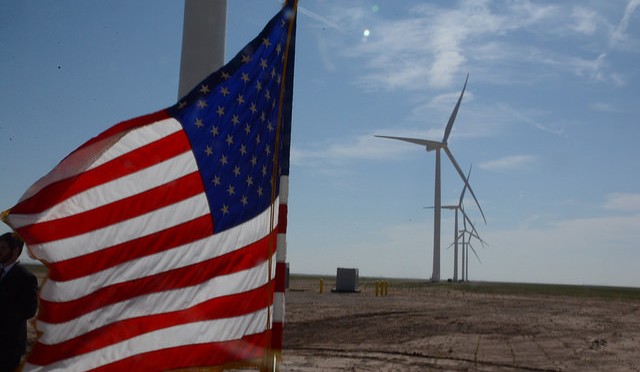The American wind energy industry hailed California’s intention to get half its electricity from zero-carbon renewable sources within 15 years as it steps up its efforts to fight climate change, saying wind can help get the job done while protecting consumers from energy price spikes.
A more diverse energy supply for the world’s eighth largest economy will also improve air quality, conserve water, and address the risk of rising fuel prices by locking in more low-cost energy for the long term. The costs of both wind and solar power have plummeted in recent years.
The California Assembly passed landmark legislation today that by 2030 will increase the state’s Renewable Portfolio Standard (RPS) to 50 percent renewably generated electricity, from the previous 33 percent, as well as double energy efficiency. SB 350, authored by Senate President Pro Tem Kevin de Leon, now goes to the state Senate with the support of Gov. Jerry Brown.
Tom Kiernan, CEO of the American Wind Energy Association, responded:
“We applaud Sen. de Leon and the Assembly for raising the bar in their fight to cut carbon pollution. The current 33 percent RPS has already led to significant job creation and improvements in air quality. These benefits are now certain to continue, as wind is among the biggest, fastest, cheapest options for states seeking to reduce carbon pollution, while protecting consumers with low prices locked in for 20 years or more. SB 350 is a giant step forward, and the wind energy industry looks forward to final passage and to helping California and the rest of the states reach their environmental goals.”
Importantly, SB 350 contains a strong directive for California to continue promoting regional cooperation with neighboring states and utilities – providing California customers access to broader regional energy markets that will help lower prices.
“We fully support a more efficient energy market in the West,” said Kiernan. “It would let California trade energy surpluses and deficits with its neighbors in a real-time market, while at the same time lowering costs for California consumers by improving access to the region’s geographic diversity of renewable energy, including wind power.”
###
DID YOU KNOW?
- Leadership. With 6,018 megawatts of installed capacity across 123 projects throughout the state, California is the second-largest producer of wind energy in the nation.
- Capacity. Wind energy provided nearly 7 percent of all in-state electricity in 2013 — the equivalent of over 1.2 million homes.
- Local jobs. Fifteen wind-related factories and over 120 wind projects across the state create have created more than 2,000 well-paying jobs in operations and maintenance, manufacturing, construction and other employment in California.
- County taxes. Wind power generates revenue for California communities, especially rural and farming communities that have suffered disproportionately from the economic crisis and ongoing drought. Wind projects in California generate $70 million in county property tax revenues each year, which is critical to new infrastructure investments and providing essential local services such as fire, police, and emergency response.
- Landowner payments. Wind project developers pay $27 million each year in lease payments to farmers, ranchers and other landowners.
- Billions of dollars invested. California’s RPS encourages clean technology investment and innovation by ensuring a market for renewables in the state will continue to grow. To date, $11.7 billion has been invested in California wind farms.
- Location matters. Wind and other California renewable energy projects tend to occur where they are most needed: almost three-quarters of new renewable generation projects in the past 10 years were built in counties with unemployment levels of 10 percent or higher.
- Clean energy. Generating wind power creates no emissions and uses virtually no water. California’s wind generation saves the equivalent of nearly 7.8 million metric tons of carbon dioxide and 3.4 billion gallons of water each year.
For a library of up-to-date library images of wind energy use this link http://www.awea.org/MediaCenter/content.aspx?ItemNumber=7244


